1. Clouded leopard Neofelis nebulosa
The quantity is rare. It is an endangered species, a national Class I key protected wild animal, and is listed in CITES Appendix I species. It inhabits tropical and subtropical evergreen forests or coniferous and broad-leaved mixed forest belts below 3,000 meters above sea level. It is the most typical forest-dwelling animal among leopards. It is highly arboreal and good at climbing. Often nests in the upper part of trees. Live alone and travel at night. It mainly feeds on herbivorous mammals, and also eats rats and small birds. It is distributed in western, central and southern Yunnan.
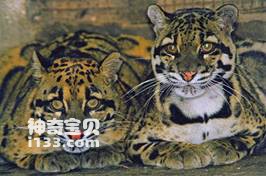
Clouded leopard Neofelis nebulosa
2. Paguma larvata
Due to deforestation, habitats have shrunk and wild populations have declined significantly. Species listed in CITES appendix. Inhabits monsoon forests, evergreen or deciduous broad-leaved forests, sparse shrubs, etc. It is good at climbing and jumps freely between branches. It is active at night and has a mixed diet, mainly eating berries and figs, and occasionally small birds and bird eggs. It is distributed in most areas of Yunnan.
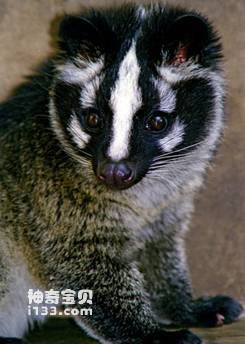
Paguma larvata
3. Bos frontalis
It is endemic to Assam, India, northern Myanmar and northwestern Yunnan, and is a semi-wild cattle species. The quantity is rare. It mainly inhabits forest edge shrubs and grassy slopes, and rarely enters dense forest areas. It feeds on fresh green plant branches and leaves and thin bamboo leaves. Domestically, it is only distributed in northwest Yunnan and southeastern Tibet.

Bos frontalis
4. Yunnan rabbit Lepus comus
Inhabits foothills, hills, shrubs or grass near farmland. The nest is disk-shaped and located in a slight depression in the ground. Activity in pairs. They mainly go out to forage at night. Their food is mainly young grasses and young branches and leaves of small shrubs. They also steal crops such as wheat seedlings, corn seedlings and soybeans. Breeding in summer and autumn, 2-3 litters per year, 1-4 offspring per litter. It is distributed in most areas of Yunnan.
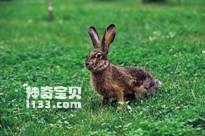
Yunnan rabbit Lepus comus
5. Thrush Garrulax canorus
It belongs to the appendix species of the Convention on International Trade in Endangered Species of Wild Fauna and Flora (CITES). The male bird's call is euphemistic and loud, making it a traditional ornamental bird in my country. Inhabits forest edges, shrubs, grass and bamboo forests in low mountain and hilly areas. Multiple single or pair activities. It is omnivorous, but mainly feeds on insects and other animal foods during the breeding period. The breeding period is generally from April to July. They build nests in grass, shrubs or low trees and lay 3-5 eggs in each clutch. Distributed in most areas of Yunnan, it is a resident bird.
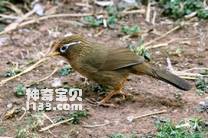
Thrush Garrulax canorus
6. Garrulax albogularis
It inhabits evergreen broad-leaved forests, mixed coniferous and broad-leaved forests, sparse forests and bamboo forests. It is also common in sparse forests and shrubs at the edge of forests, as well as shrubs and sparse forests near villages and farmland. They form small groups in the canopy or dense forest. It lives in shrubs and mostly forages on the forest floor or in shrubs. It mainly feeds on insects, but also on fruits and seeds of plants. The breeding period is from May to July, and they build nests on understory shrubs or small branches not high from the ground. Distributed in most areas of Yunnan, it is a resident bird.
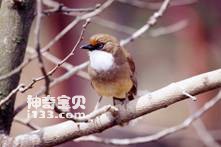
White-throated Babbler Garrulax albogularis
7. Blue-throated Sunbird Aethopyga gouldiae
It inhabits evergreen broad-leaved forests, coniferous forests, and sparse shrubs. It is also commonly found in trees and bamboo groves along rivers and roads. It often forages alone or in pairs, often in flowering trees or forests. Parasitic plants above the middle layer move among flowers and feed on nectar, stamens and insects. It is distributed in most areas of Yunnan and is a resident bird.
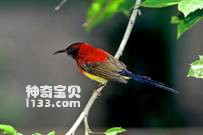

Blue-throated Sunbird Aethopyga gouldiae (top: , bottom: )
8. Yellow-breasted Weaver Bird Ploceus philippinus
It is named because both male and female birds can weave delicate and dense nests like cloth. Inhabits farmland, grass and other places in tropical areas. They like to move in groups and like to eat grains and other plant seeds, as well as some insects. The breeding period is from March to August. The nests are often built on the branches of trees or bamboo forests. More than ten nests can be hung on a tree. The nests are gourd-shaped and made of grass silk. The number of eggs in the clutch is 2-4, and the eggs are white. In China, it is only distributed in southwestern Yunnan and is a resident bird.
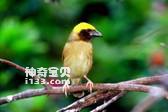
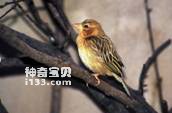
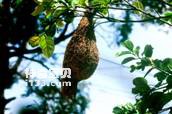
Yellow-breasted weaver bird Ploceus philippinus (top: , middle: , bottom: nest)
9. Treron sphenura
It is a nationally protected wild animal. They live in broad-leaved forests or mixed coniferous and broad-leaved forests in mountainous areas. They often move alone, in pairs or in small groups. Mainly feeds on plant seeds and berries. The breeding period is from April to August. They build nests on trees and breed two clutches every year, laying 2 eggs in each clutch. It is widely distributed in most areas of Yunnan and is a resident bird.
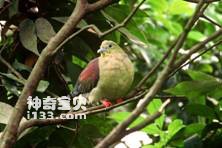
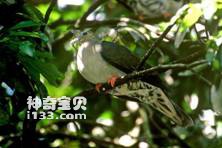
Wedge-tailed green dove Treron sphenura (top: , bottom: )
10. Black-tailed Grosbeak Eophona migratoria
It inhabits broad-leaved forests and mixed coniferous and broad-leaved forests, and is also found in sparse forests, bamboo forests and tall trees near villages, roads, farmland, orchards and courtyards. Often alone, in pairs or in groups of dozens. It feeds on fruits, seeds, etc. of plants, and also eats some insects. It is distributed in most areas of Yunnan and is a traveling bird and winter migratory bird.
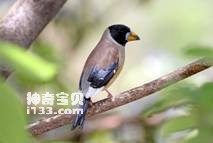
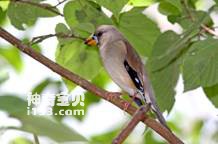
Black-tailed Grosbeak Eophona migratoria (top: , bottom: )
11. Crested pochard Aythya fuligula
Terrestrial wild animals that are beneficial and have important economic and scientific research value in Yunnan Province. They inhabit wide waters such as rivers, lakes, reservoirs, ponds, etc. They often form large groups of hundreds and swim with the waves on the water, sometimes in mixed groups with other ducks. It is good at swimming and diving, and can dive to the bottom of the water several meters deep to prey on animals such as shrimps, crabs, small fish, tadpoles, field snails, and young frogs. It also eats aquatic plants. Stay overnight on the beach near the water or on the water not far from the shore. The breeding period is from May to June, and they build their nests on reed piles floating among reeds or aquatic plants in the lake. Each clutch lays 7-12 eggs. Mainly distributed in northwest and western Yunnan and the central Yunnan Plateau, it is a winter migratory bird.

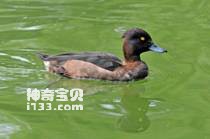
Crested pochard Aythya fuligula (top: , bottom: )
12. Anas formosa
It is a species listed in Appendix II of the Convention on International Trade in Endangered Species of Wild Fauna and Flora (CITES). They inhabit wetlands such as lakes, reservoirs and swamps. During the winter, they move alone or in small groups. They are also seen in mixed groups with mallards, spot-billed ducks and other wild ducks foraging in shallow water near the water. The food is mainly plant foods such as buds, leaves, fruits and seeds of various aquatic plants. It also eats small invertebrates such as snails, molluscs, and aquatic insects. In Yunnan, it is only recorded sporadically in Dianchi Lake in Kunming, Mengzi, and Lashihai in Lijiang. It is a rare winter migratory bird.
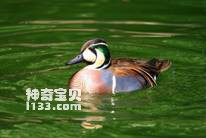
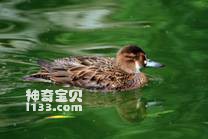
Painted-faced duck Anas formosa (top: , bottom: )
13. Psammodynastes pulverulentus
It is a reptile of the genus Colubridae. It generally inhabits places with abundant water and grass in the shade of low mountains below 1620m above sea level, and in environments with many shrubs, grasses and fallen leaves at the junction of farming areas and forests. It moves slowly. It is widely distributed in China and is distributed in western Yunnan, southern Yunnan and central Yunnan in Yunnan.
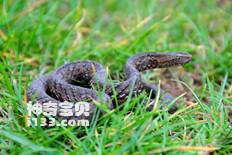
Psammodynastes pulverulentus
14. Bungarus multicinctus
It belongs to the genus Elapidae and is a highly venomous snake. Lives in plains or mountains below 1300m altitude. Bungaras are active at night and mostly live near water, where they feed on fish, frogs, snakes and rats. Egg laying, breeding period is from August to September. Yunnan is distributed in central, southern, and southeastern Yunnan.
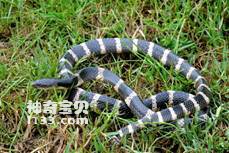
Bungarus multicinctus
15. Ptyas korros
It belongs to the genus Colubridae and is also known as the tree dragon. It lives in mountainous areas with an altitude of 500-1600m. It is commonly found in farming areas and near residential buildings, as well as in shrubs or trees. The staple food is rodents and lizards. Domestically distributed in southern provinces and regions. It is distributed in central, western, southern, southeastern Yunnan and other places.
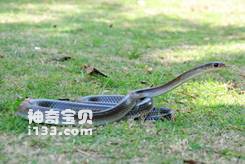
Gray rat snake Ptyas korros
16. Elaphe carinata
It belongs to the genus Colubridae. Distributed in mountainous areas below 2400m above sea level. It often preys on frogs, lizards, snakes, birds and rodents in mountainous shrubby environments. Oviparous, eggs are laid in August. It is widely distributed in China and is distributed throughout Yunnan.
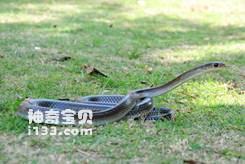
Elaphe carinata
17. Batrachperus pinchonii
Shanxi salamander is an animal of the genus Hynobiidae in the family Hynobiidae. It is commonly known as snow fish and squid. It is a unique species in China. Distributed in Sichuan, Guizhou, Yunnan and other places, it lives in alpine streams and ponds at an altitude of 1700-4000 meters. It often inhabits under rocks, tree roots, moss or in caves in springs in mountain streams and ponds. Yunnan is mainly distributed in northwest Yunnan.
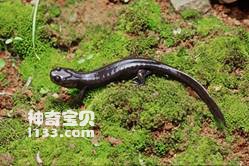
Mountain stream salamander Batrachperus pinchonii
18. Yunnan stink frog Rana andersonii
The Yunnan stink frog is an amphibian of the genus Ranidae in the family Ranidae. Lives near mountain streams or ponds in closed forests at an altitude of 1200-2100m, or near ponds under small waterfalls. It is distributed in Yunnan except in the north and northwest.
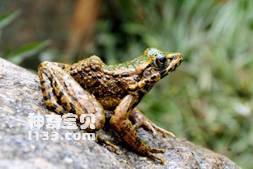
Yunnan stink frog Rana andersonii
19. Rana pleuraden
The Yunnan frog belongs to the amphibian genus Ranidae. It mainly lives on the Yunnan Plateau and the southern section of the Hengduan Mountains, in and around still waters at an altitude of 1800-3000m. It has strong adaptability to life and is easily found in rice fields. In Yunnan, it is distributed in central, western, northwest, and eastern Yunnan and other regions.
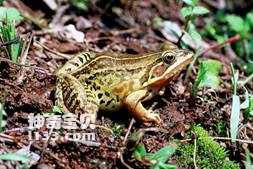
Rana pleuraden
20. Saw-legged tree frog Philautus carvirostris
The saw-legged tree frog is an amphibian of the genus Rhacophoridae in the family Rhacophoridae. The altitude range of survival is 800-1500 meters; it generally inhabits shrub areas, often on shrub branches and leaves or the leaves of vines and weeds. In Yunnan, it is mainly distributed in southern and southeastern Yunnan.
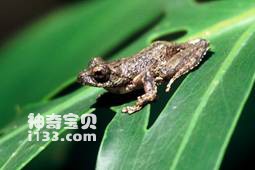
Saw-legged tree frog Philautus carvirostris
21. Graphium agamemnon
Species of the genus Green Papilio are medium to large in size and fly rapidly. The wings of this species are black or dark brown on the front, with scattered yellow-green spots, and the hind wings have a short tail process. Mostly used in butterfly crafts. The larvae feed on plants of the genus Tomato genus and the genus Lycoris. Distributed in most of Yunnanarea.

Graphium agamemnon
22. Euploea core
The color of the wings changes when viewed from different angles, which is quite magical. It can be seen from river valleys to mountains with an altitude of 1,200 meters. It likes mountain activities with plenty of sunshine and dry breeze. It keeps flapping its wings when visiting flowers. It mostly chooses dry leaves or debris of similar colors to inhabit. The larvae feed on some plants of the genus Toxocarpa, Oleander, Ficus and Rubiaceae and Ulmaceae. It is distributed in southern and southeastern Yunnan and other places.

Euploea core
23. Diastocera wallichi
Living in subtropical forests, the host plants of forest and economic forest pests include: kapok, toona sinensis, oak, willow, alder, albizia julibrissin, woodlotus, peach, etc. Yunnan Province is mainly distributed in western Yunnan, central Yunnan, southeastern Yunnan and northeastern Yunnan.
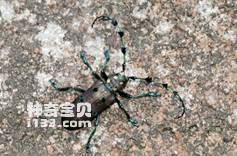
Diastocera wallichi
24. Macroceroea grandis
The male giant red stink bug has an extremely extended abdomen, far exceeding the forewings, while the female is wider and shorter. The male's antennae are extremely long. The whole body is red to vermilion, with a small scute, a subtriangular spot in the middle of the pronotum, a row of large triangular spots in the center of the leather, and brown to black markings on the forewing diaphragm, feet and abdominal joint joints. Host plants include cotton, nightshade, bamboo shoots, etc. In Yunnan, it is mainly distributed in the southern region.
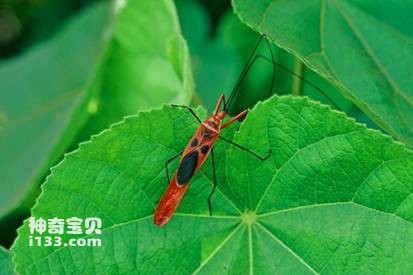
Giant red stink bug Macroceroea grandis
animal tags:
We created this article in conjunction with AI technology, then made sure it was fact-checked and edited by a Animals Top editor.